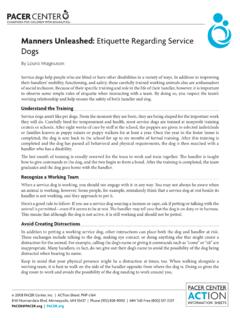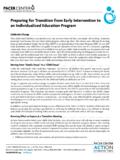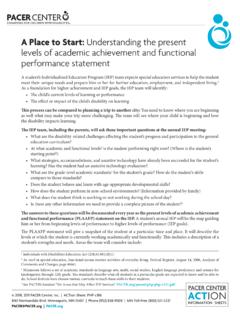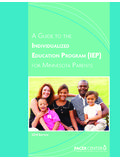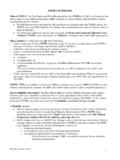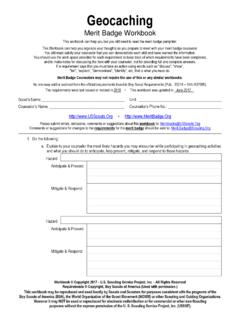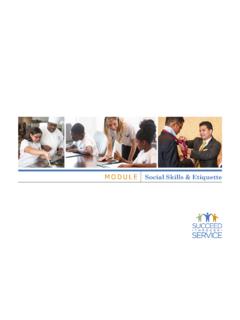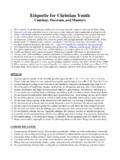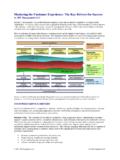Transcription of Basic Disability Etiquette Tips - PACER
1 PACER CENTERACTIONINFORMATION SHEETSB asic Disability Etiquette TipsThe following tips are things to keep in mind when interacting with people with disabilities. Remember each person is an individual. Never assume you know what a person with a Disability wants or needs. If offering any assistance, always wait for a response and then follow the individual s instructions. When talking to a person with a Disability , talk directly to that individual, not the friend, companion or Sign Language interpreter who may be present. Respect all assistive devices ( canes, wheelchairs, crutches, communication boards) as personal property. Unless given permission, do not move, play with, or use them.
2 Remember that people with disabilities are interested in the same topics of conversations as non-disabled individuals. When introduced to a person with a Disability , it is appropriate to offer to shake hands. People with limited hand use or who wear artificial limbs can usually shake hands. (Shaking hands with your left hand is an acceptable greeting.) If talking with a person using a wheelchair for any length of time, try to place yourself at their eye level. (This is to avoid stiff necks and talking down to the individual.) Remember to show your face while talking with someone who is Deaf or hard of hearing. Do not shout or raise your voice unless asked to do so.
3 If greeting someone who is blind or has a visual impairment, identify yourself and those who may be accompanying you. Do not pet or make a service dog the focus of conversation. Let the individual know if you move or need to end the conversation. When interacting with a person who is visually impaired, follow their lead. If they need assistance, they will ask. Allow the person to negotiate their surroundings, , finding the door handle, locating a chair, etc. Treat adults as adults. Address people with disabilities by their first name only when extending the same familiarity to all others. 2004 PACER Center, Inc. | ACTion Sheet: PHP-c1278161 Normandale Blvd.
4 Minneapolis, MN 55437 | Phone (952) 838-9000 | MN Toll-Free (800) |
